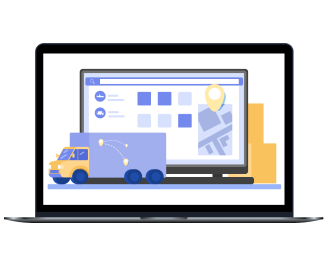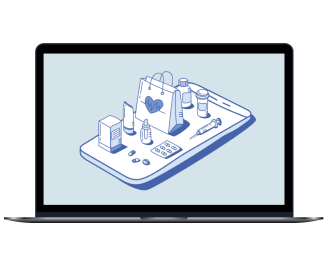Load planning system for 123 Sourcing
Learn how we helped 123 Sourcing reduce manual work and human errors, decrease labor, shipping, and storage costs, as well as retain clients and attract new ones with a semi-automated load planning system.
-
industry
Logistics
-
Country
Mexico
-
Team size
5
-
Collaboration
January 2021 – December 2021
About the client
123 Sourcing is a fourth-party logistics company that offers operational logistics services including transportation, consolidation center storage, picking and packing, inventory forecasting, order fulfillment, and freight forwarding.

Business context
123 Sourcing supplies manufacturing plants with raw materials and components from multiple suppliers to ensure uninterrupted production. However, this process was cumbersome due to urgent changes that could occur on the part of both manufacturers and suppliers.
To reduce lead time and avoid errors, our client decided to automate their delivery management with a load planning system allowing for:
- calculating availability of materials/components
- comparing calculations based on changing parameters
- planning the number of containers needed to fulfill a shipment
- updating production plans based on updates to delivery plans
Solution overview
-
Defining the client’s “as is” and “to be” processes
We took the following steps to discovering existing bottlenecks and model the future state of our client’s business processes:
- Analyzed the current state of the client’s business processes and outcomes
- Quantified and documented bottlenecks in the current state
- Defined the future state based on the client’s requirements and KPIs
- Researched similar ready-made solutions (none fully covered the client’s needs, but they were useful as a source of ideas)
- Described the implementation of the future state model and documented value stream, development roadmap, activity diagram, and feature map
-
Introducing the load planning system concept
We designed a load planning calculator that takes into account production plan data and arrival dates of components to the client’s consolidation center, allowing the manufacturer’s scheduler to:
- define a production plan, which includes its implementation date, the number of products to produce, the bill of materials, and the production lead time
- ask the calculator if it’s feasible to deliver parts to the consolidation center to implement the production plan
- make informed decisions based on context the calculator provides on the plan’s feasibility
provide the consolidation center with data on the number of containers to book or cancel - estimate the least number of containers required to allocate all components (based on their weight and volume)
-
Developing the solution
Using the design concept, we built a cost-effective proof of concept (PoC) system that will lay the foundation for future integrations and add-ons. The solution we developed boasts:
- interoperable architectural components. To support fast changes in the system, we laid the basis for a multi-tenant architecture that can easily be deployed after moderate modifications.
- optimized container calculations. To optimize the calculation of containers needed to fulfill a shipment, we chose Google OR-Tools to ensure fast and cost-efficient development.
- smooth and effective data management. All data used for calculations is taken from JSON files uploaded to the system by users. When a user makes any changes to source data — such as container type/size or production week — results are automatically recalculated.
Value delivered
The load planning system optimized the client’s operational processes and achieved the following results:
-
Compulsory recalculations now take seconds instead of hours
-
No need to manually calculate production plan feasibility
-
No more overstocking, resulting in reduced storage costs and better customer loyalty
-
Minimized human errors like improper delivery planning, unoptimized container filling, and forgetting to make critical phone calls
-
Optimized shipping costs due to proper planning of the number of containers needed to fulfill a delivery
AUTOMATE YOUR LOGISTICS AND DELIVERY ROUTINE
Yalantis will help you develop an automated solution for reducing manual work, eliminating human errors, and enhancing operational efficiency


